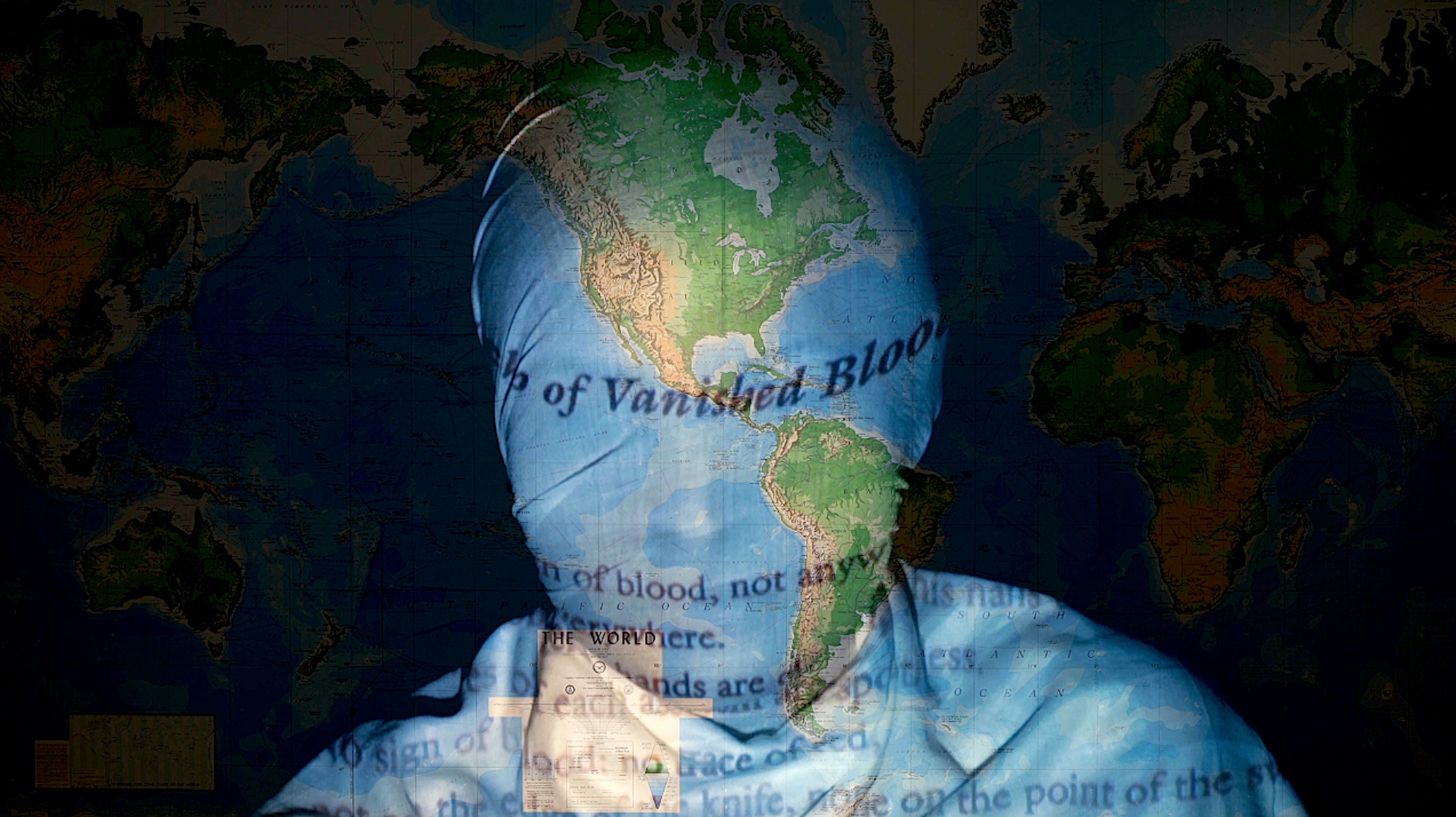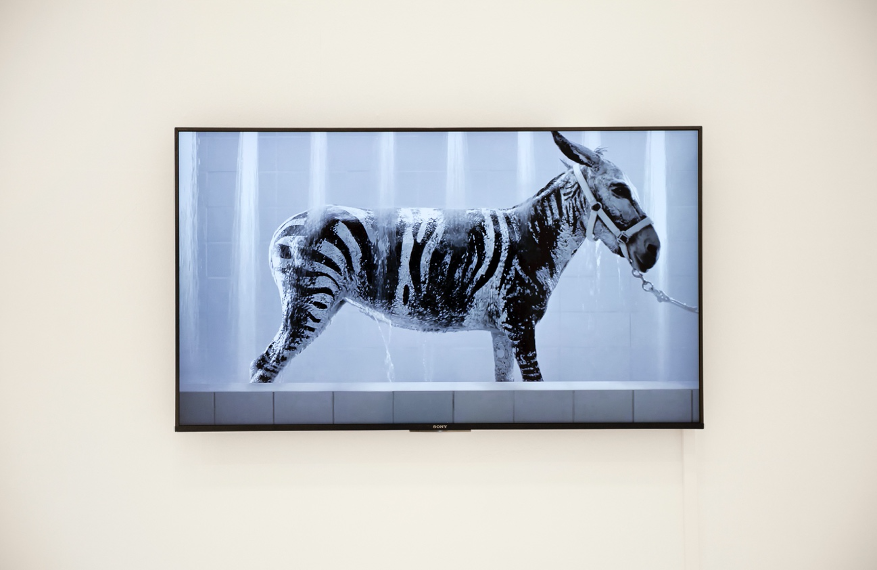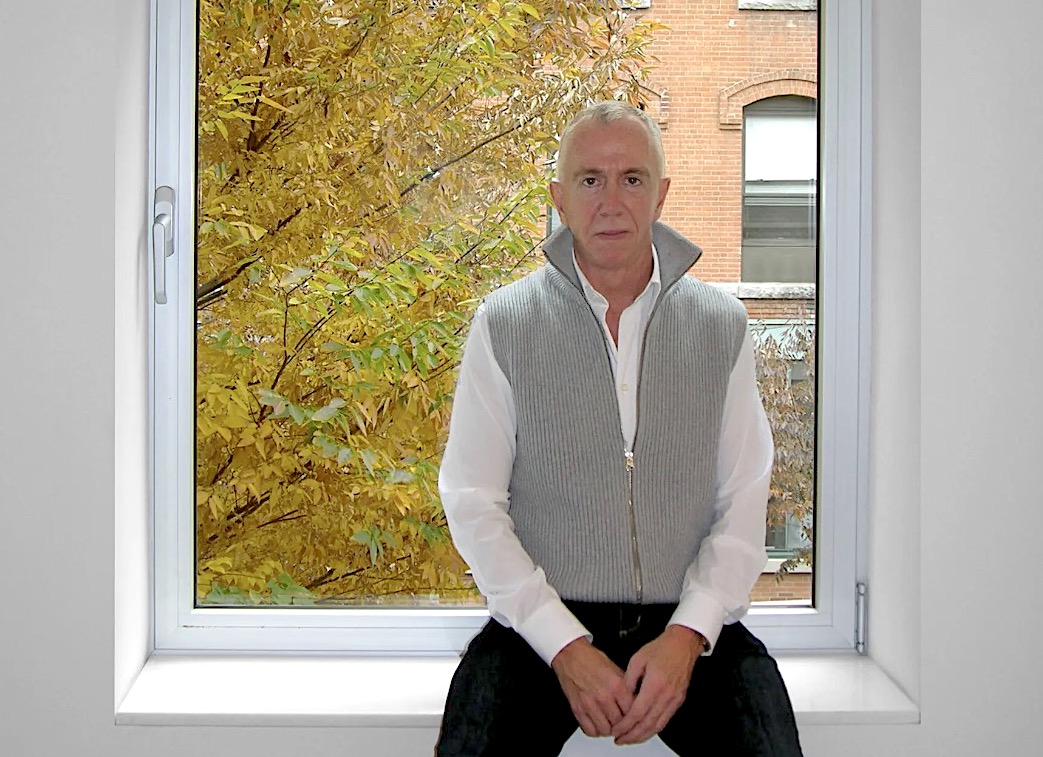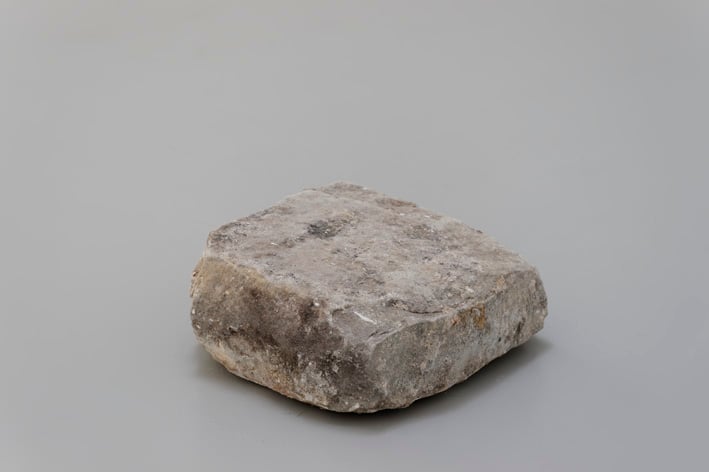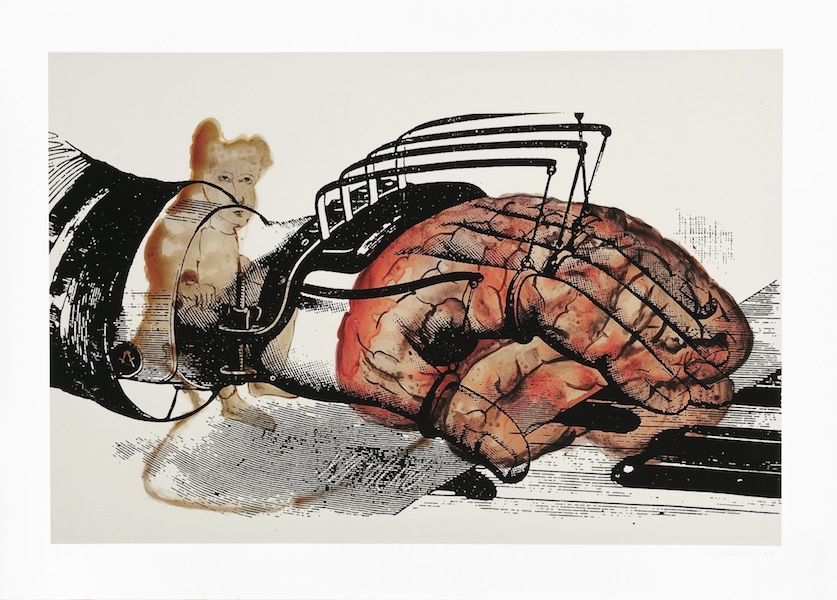
© » KADIST
Carolyn Lazard
Between 1951 and 1974, Dr. Albert M. Kligman, a professor of dermatology at the University of Pennsylvania, oversaw medical experiments conducted on incarcerated people at Holmesburg Prison in Philadelphia. These nontherapeutic tests ranged from athlete’s foot powders, dandruff shampoos, deodorants, and detergents, as well as more hazardous materials such as dioxin, radioactive isotopes, and mind-altering psychotropics. During his tenure at Holmesburg, Dr. Kligman worked for companies such as Johnson & Johnson, developing the acne medicine Retin-A, and for Dow Chemical Company and the U. S. Department of Defence, testing the ‘tactical herbicide’ Agent Orange.
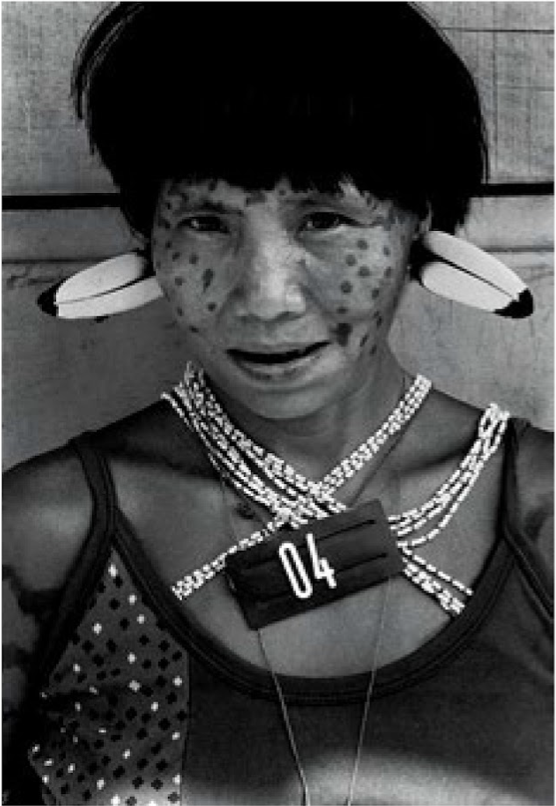
© » KADIST
Claudia Andujar
In 1980, with the construction of highways in Indigenous territories, an epidemic was brought to the Yanomami region. As the Yanomami do not have first names, it was necessary to give them numbers to indicate that they had already been vaccinated and identify each one for their medical records. From this series of events, Claudia Andujar’s Marcados series was born: what was supposed to be a mere photographic record, for organizational purposes, ended up raising a big question about the “labels” given to people in the construction of societies.
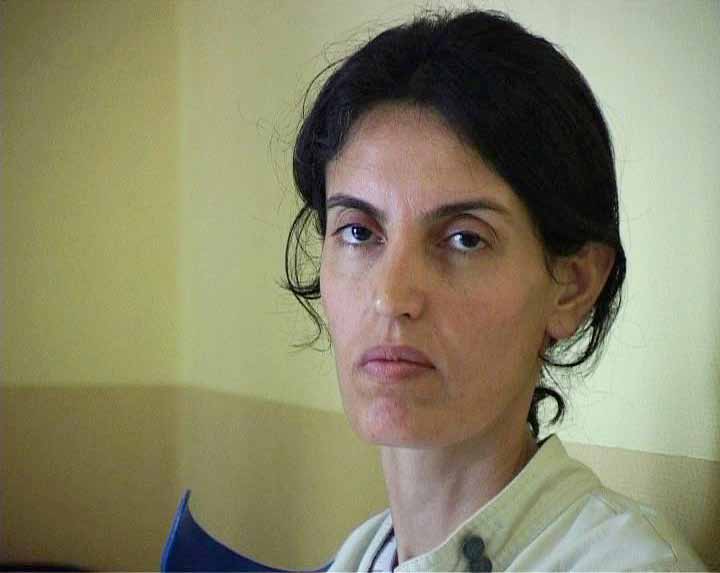
© » KADIST
Clarisse Hahn
Prisons is part of a series of videos, entitled Our Body is a Weapon , representing individuals who affirm the body as a place of political and social resistance. In this video, two young women used their bodies as a weapon of war, participating in a hunger strike in Turkish prisons in the year 2000. This hunger strike was violently repressed by the army.

© » KADIST
Tirdad Hashemi
This untitled painting by Tirdad Hasemi presents a space that can be thought of as both a prison cell and a house. Paradoxically, in both cases the color and the importance of the walls give a feeling of confinement. Escaping from prison in Iran and finding the walls of a home in Europe has been a complex and conflicting experience for Hashemi.

© » KADIST
Tirdad Hashemi
Drawing & Print (Drawing & Print)
The Blue Poisoning series , reveals the outcome of artist Tirdad Hashemi’s weary and depressed days in the winter of 2022, following their second migration from Paris to Berlin. The color blue expresses the feelings of sadness and loneliness felt by the artist in the frozen Berlin cold. In the drawing, lonely and tormented bodies seem to struggle to live; despite their suffering, they still hope.
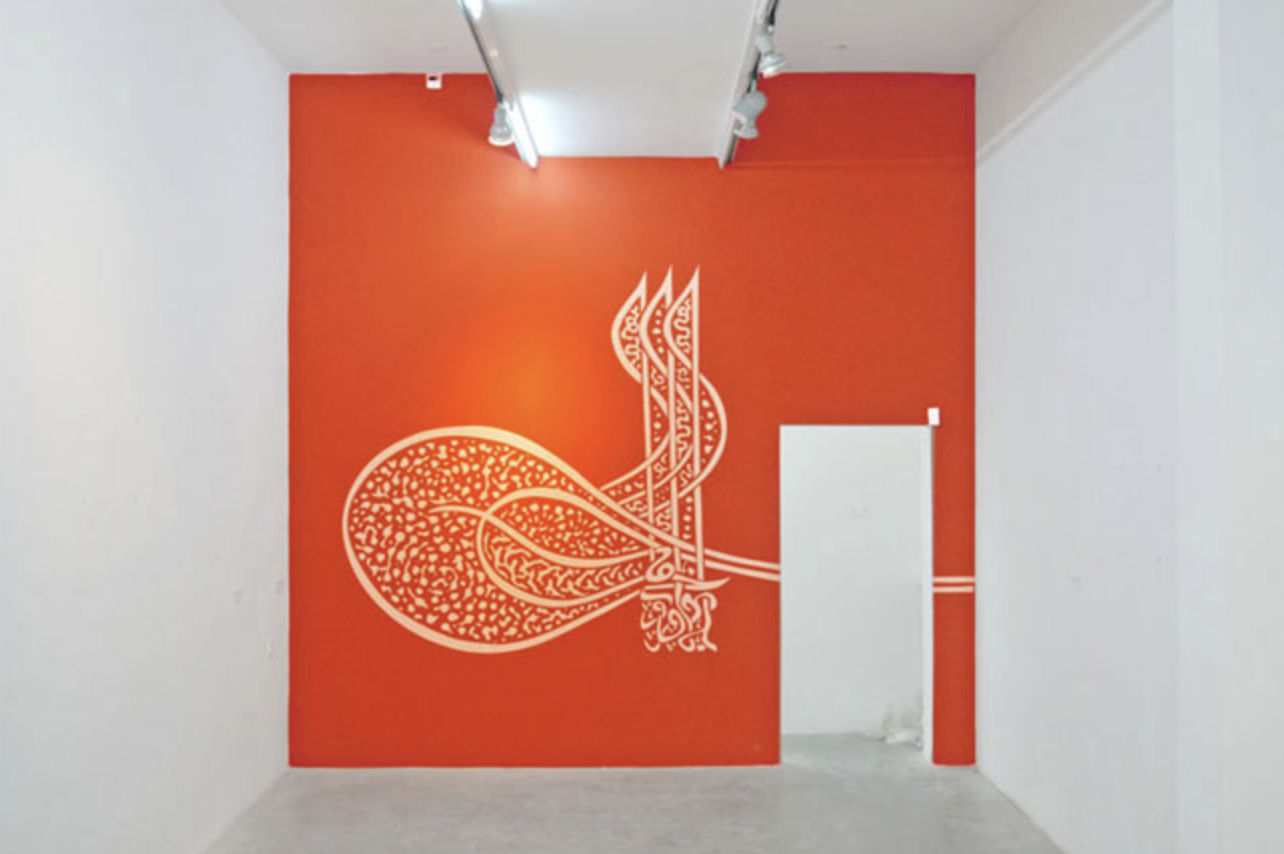
© » KADIST
Sharif Waked
Tughra is a protocol by Sharif Waked that reproduces the sixteenth century calligraphic monogram for tughra ; also known as the signature of Suleiman the Magnificent. Under Suleiman’s reign, at the beginning of the 16th century, the Ottoman empire achieved its apex both in terms of territorial extension and cultural creation. Suleiman personally instituted major judicial changes relating to society, education, taxation, and criminal law, as such he is often referred to as ‘The Lawgiver’.

© » KADIST
Birender Kumar Yadav
Birender Kumar Yadav comes from Dhanbad, India, a city built on its proximity of iron ore and coal and once forested and inhabited by Indigenous people who compose the Gondwana. The forests were felled and immigrants from northern Bihar and South India were brought to exploit the mineral resources. The Indigenous people were then dispersed to live nomadically, engaging themselves as seasonal workers in farms and industries.

© » KADIST
Claudia Andujar
In 1980, with the construction of highways in Indigenous territories, an epidemic was brought to the Yanomami region. As the Yanomami do not have first names, it was necessary to give them numbers to indicate that they had already been vaccinated and identify each one for their medical records. From this series of events, Claudia Andujar’s Marcados series was born: what was supposed to be a mere photographic record, for organizational purposes, ended up raising a big question about the “labels” given to people in the construction of societies.

© » KADIST
Mona Marzouk
Trayvon is a series of acrylic paintings by Mona Marzouk that engages the courtroom as its points of departure. The courtroom as a space for the implementation of justice and of legal argumentation, but also through which different affective forces, some hegemonic and others marginalized, battle each other out in their respective quests for acknowledgment, accountability, and retribution. The work was produced at a time during which several popular revolts, such as in Egypt, seemed to have effectively been hijacked by reactionary forces, resulting in the violent dismissal of collective demands for emancipation, including through sham trials and wrongful convictions criminalizing activists, journalists, and protesters.

© » KADIST
Claudia Andujar
In 1980, with the construction of highways in Indigenous territories, an epidemic was brought to the Yanomami region. As the Yanomami do not have first names, it was necessary to give them numbers to indicate that they had already been vaccinated and identify each one for their medical records. From this series of events, Claudia Andujar’s Marcados series was born: what was supposed to be a mere photographic record, for organizational purposes, ended up raising a big question about the “labels” given to people in the construction of societies.

© » KADIST
Birender Kumar Yadav
Drawing & Print (Drawing & Print)
Birender Kumar Yadav comes from Dhanbad, India, a city built on its proximity of iron ore and coal and once forested and inhabited by Indigenous people who compose the Gondwana. The forests were felled and immigrants from northern Bihar and South India were brought to exploit the mineral resources. The Indigenous people were then dispersed to live nomadically, engaging themselves as seasonal workers in farms and industries.

© » KADIST
Claudia Andujar
In 1980, with the construction of highways in Indigenous territories, an epidemic was brought to the Yanomami region. As the Yanomami do not have first names, it was necessary to give them numbers to indicate that they had already been vaccinated and identify each one for their medical records. From this series of events, Claudia Andujar’s Marcados series was born: what was supposed to be a mere photographic record, for organizational purposes, ended up raising a big question about the “labels” given to people in the construction of societies.

© » KADIST
Mona Marzouk
Trayvon is a series of acrylic paintings by Mona Marzouk that engages the courtroom as its points of departure. The courtroom as a space for the implementation of justice and of legal argumentation, but also through which different affective forces, some hegemonic and others marginalized, battle each other out in their respective quests for acknowledgment, accountability, and retribution. The work was produced at a time during which several popular revolts, such as in Egypt, seemed to have effectively been hijacked by reactionary forces, resulting in the violent dismissal of collective demands for emancipation, including through sham trials and wrongful convictions criminalizing activists, journalists, and protesters.
![Diálogo [Dialogue]](https://kadist.org/wp-content/uploads/2023/10/Dialogo-1-scaled.jpg)
© » KADIST
Patricia Belli
In the mid-1990s, Belli started to create soft sculptures that allowed her to reconnect with manual labor and sewing learned from her seamstress mother. Using recycled fabrics and objects collected from friends and second-hand stores in Nicaragua, Belli’s work explored the codification of family space—using dolls, tables, tablecloths, and curtains—making tangible how masculine authority is inscribed onto women’s bodies daily. Produced during her time as an MFA student at the San Francisco Art Institute, Diálogo is part of a group of sculptures that addresses the tension between restriction and agency, imprisonment and liberation, and ultimately, the possibilities and limits of human action in a society with deeply eroded democratic structures.

© » KADIST
Doreen Lynette Garner
Known But to God: The Dug Up, Dissected, and Disposed for the Sake of Medicine by Doreen Lynnette Garner is a small, suspended sculpture composed of glass, silicone, steel, epoxy putty, pearls, Swarovski crystals, and whiskey. At once attractive and repulsive, the sculpture combines objects of adornment with what appears to be viscera. The sculpture’s curious delicacy evokes a ritualistic catharsis, in response to persistent forms of medical racial violence and objectification for Black people in America and around the world.

© » KADIST
Goddy Leye
In Goddy Leye’s installation work The Beautiful Beast , a video is projected onto a gold-colored wooden box filled with sesame seeds. The sesame seeds look like pixels underneath the video, suggesting the texture of animation. The artist portrays a strange man who writhes on the ground like a beast against this ‘pixelated’ field.

© » KADIST
James "Yaya" Hough
Drawing & Print (Drawing & Print)
This untitled ink and pencil drawing by James “Yaya” Hough is made on what the artist calls “institutional paper”, or the state-issued forms that monitor the daily activities of prisoners, of which, each detainee is generally required to fill out in triplicate. The form used for this drawing details a weekly menu for the prisoners. Hough’s drawing depicts three grimacing figures, riding atop the back of a larger, female figure on all fours.

© » KADIST
Danaya Chulphuthiphong
The film Demos by Danaya Chulphuthiphong draws parallels between zoo animals and humans through an assemblage of footage and images collected from various news and science websites. The soundtrack, made in collaboration with filmmaker, artist, and musician Pathompon “Mont” Tesprateep, was also sourced online and includes recordings of sounds produced in outer space, underwater, the deep jungle, as well by drones and laser beams. The film begins with the watchful eye of a semi-submerged crocodile, then shifts into an industrial scene of cranes swinging building materials across the sky.

© » KADIST
James "Yaya" Hough
Drawing & Print (Drawing & Print)
This untitled ink and pencil drawing by James “Yaya” Hough is made on what the artist calls “institutional paper”, or the state-issued forms that monitor the daily activities of prisoners, of which, each detainee is generally required to fill out in triplicate. The form used for this drawing is a request for medical attention. This work illustrates an assembly-line of severed bodies being pumped full of feet and other body parts.

© » KADIST
Uriel Orlow
The series The Memory of Trees is specifically about trees, and what trees have witnessed in South Africa: for example, trees that were used as locations for slave trading, or trees that was during the anti-Apartheid struggle as a kind of identifier for a safe house for activists who were fleeing from security forces. Trees and plants are connected and embedded in history; but not only as witnesses and onlookers; Orlow tries to think about plants as active agents in history. This perspective allows for an oblique view of history especially when it comes to specific loci of violence such as in South Africa.

© » KADIST
Danielle Dean
In 2003, Nike released a pair of red and black sneakers (the Dunk Low Pro SB ) that were marketed as “vampire” sneakers. Danielle Dean’s work True Red examines how a large corporation co-opted a historical fiction (the vampire), in addition to the traditional red and black colors of radical politics and the avant-garde. The animated video considers how capitalism can gentrify notions of radicality and the mutable nature of advertising.

© » KADIST
Diego Bianchi
Diego Bianchi’s main concern is distorting straight lines, both literally and metaphorically. To him, deviation is the only feasible strategy to allow the unexpected to happen, making space for semantic turns, impossible encounters, and dissolving binaries. The bodily dimension appears in his art both as disturbance of the senses and perception, and as research into processes of consumerism, oppression, decomposition, and destruction.

© » KADIST
Daniela Ortiz
The Rebellion of Roots by Daniela Ortiz depicts a series of situations in which tropical plants, held hostage in the botanical gardens and greenhouses of Europe, are protected and nurtured by the spirits of racialized people who died as a result of European racism. The work is divided into four short stories: About Afghanistan and heroin , About Exposition Colonial and cow , About Jardin d’acclimatation and potato , and About Vietnam . The series of 14 painted panels draw upon the aesthetic of ex-votos, a genre of traditional religious folk painting that acts as a tribute for divine intervention in response to personal tragedy.

© » KADIST
Zhou Tao
Zhou Tao spent almost two years in 2017 and 2018 in an eco-industrial park at the foot of the Kunlun Mountains in China exploring the activities of humans and other species in that particular topography between the mountain, the land and the desert. From the discovery of ancient desert villages to the billions of black chickens that will be raised under the snow-covered Kunlun Mountains, the resulting film and the photographs capture the climate and landscape, listening to the desert’s chanting and whispering, while attempting to construct a unique topology. Shot during the film production, the accompanying stunning photograph Winter North Summer South No.

© » KADIST
Zhou Tao
Zhou Tao spent almost two years in 2017 and 2018 in an eco-industrial park at the foot of the Kunlun Mountains in China exploring the activities of humans and other species in that particular topography between the mountain, the land and the desert. From the discovery of ancient desert villages to the billions of black chickens that will be raised under the snow-covered Kunlun Mountains, the resulting film and the photographs capture the climate and landscape, listening to the desert’s chanting and whispering, while attempting to construct a unique topology. Shot during the film production, the accompanying stunning photograph Winter North Summer South No.

© » KADIST
Ashmina Ranjit
While most of Ashmina Ranjit’s work has been large-scale installations, often immersive and site-specific, the series Hair Warp – Travel Through Strand of Universe is a brilliant concentration of both her beliefs and aesthetic. In this series, human hair is treated as a sacred element that connects womanhood and as Ranjit states, “all phenomena beyond the sky”. In the painting, the sinuous hair strands morph constantly into different braids, swirls, and landscapes, emitting a mysterious force of life.

© » KADIST
Mary Reid Kelley
Kelley’s 2015 portrait of the poet Charles Baudelaire is one of a series of poets, rappers, and other thinkers who have influenced the artist’s ideas about beauty, creativity, and expression. As a challenging artist who marches to her own drum, Mary Reid Kelley is in the vanguard of a generation that blends the digital and the analog to dialogue with history. From 2009 to the present, she has made videos that fuse live performance, animation, drawing, sculpture, and digital design.

© » KADIST
Dread Scott
Drawing & Print (Drawing & Print)
This screen-print by Dread Scott titled Imagine a World Without America shows a map without the landmass that is the USA, as if the continents have drifted, or as if it never existed in the first place. Artist Dread Scott’s work is founded upon challenging “American patriotism as a unifying value,” and as such he claims that it is necessary to “burn the US Constitution (an outmoded impediment to freedom), and position the police as successors to lynch mob terror.” Perhaps one must imagine a structurally different world to produce new and freer modes of thought. While not explicitly related to Afro-Futurism, one of the key sub-genres of science-fiction and related thought is speculative revisionism; asking ‘how would the world be different if X never happened?” This modest work is a call to our daily imaginary, an invitation to zoom out to the scale of the global human condition, and implicitly America’s role in trade, war, cultural exchange, and the spread of western values.

© » KADIST
Brook Andrew
This year: missing witness by Brook Andrew consists of a multi-layered collage of photographs. The work features newspaper cut-outs of the phrases: “This year: be prepared…” and “missing witness” overlaid onto a disaster scene, upon a worn-up manuscript. Pulled from The New York Times , the image is of a destroyed temple on the Indonesian island of Sulawesi, that has increasingly experienced natural disasters due to climate change.

© » KADIST
Troy Chew
Too Many Names by Troy Chew is a patchwork of contemporary Black culture and resistance, including hand-sewn symbols and patterns found in the coats of arms of the kings of the Dahomey region (now Benin) that ruled from 1600-1900. This painting is part of the series Out the Mud, a longterm project in which the artist explores African American history through the lens of traditional mudcloth techniques found in the West African countries involved in the Transatlantic-slave trade. The title of the series references the technique and materials for making mudcloth.
Claudia Andujar
Claudia Andujar was born in Switzerland in 1931, and then moved to Oradea, on the border between Romania and Hungary, where her paternal family, of Jewish origin, lived...
James "Yaya" Hough
Working in ballpoint pen, pencil, and watercolor, often on the backs of bureaucratic prison forms, James “Yaya” Hough’s work conveys the burdens of incarcerated life, revealing not only the brutal reach of the carceral system, but laying bare its affects...
Hank Willis Thomas
- location: New York, New York
- year born: 1976
- gender: male
- nationality: American
- home town: Plainfield, New Jersey
Zhou Tao
Artist Zhou Tao has a diverse and varied practice, and notably, he denies the existence of any singular or real narrative or space...
Birender Kumar Yadav
Birender Kumar Yadav is a multi-disciplinary artist who experiments with various media including painting, sculpture, photography, installation, etching, found and man-made objects, as well as live documentary...
Tirdad Hashemi
Leaving Iran in 2017, Tirdad Hashemi now cultivates perpetual movement, between their hometown of Tehran, Istanbul, Paris, and Berlin...
Mona Marzouk
Mona Marzouk is an artist whose practice is deeply rooted in a keen sense for architecture...
Troy Chew
Spanning painting, drawing, and sculpture, Troy Chew’s practice reflects on the legacy of the African diaspora through the lens of urban culture...
Mary Reid Kelley
Drawing from literature, plays, and historical events, Mary Reid Kelley makes rambunctious videos that explore the condition of women throughout history...
Goddy Leye
Born in 1965 in Mbouda (Cameroun), Goddy Leye was an artist, a teacher, a cultural activist and a curator based in Douala (Cameroun)...
Nalini Malani
- year born: 1946
- gender: female
- nationality: Indian
- home town: Karachi, Pakistan
Diego Bianchi
Since the early 2000s, Diego Bianchi has captured the atmosphere of a generation forged under a chronic state of crisis and precariousness in South America...
Carolyn Lazard
Carolyn Lazard’s practice centers disability and accessibility through sculpture, video, installation, and performance...
Danielle Dean
Danielle Dean creates videos that use appropriated language from archives of advertisements, political speeches, newscasts, and pop culture to create dialogues to investigate capitalism, post-colonialism, and patriarchy...
Tuan Andrew Nguyen
Tuan Andrew Nguyen is an artist and filmmaker, one of the three founders of The Propeller Group created in 2006...
Apostolos Georgiou
Inescapably political, Apostolos Georgiou’s paintings are realized by bold and mastered brush strokes...
Patricia Belli
Since the 1980s, Patricia Belli has been a driving force behind the rise of experimental work in Nicaragua...
Dread Scott
Dread Scott is an interdisciplinary artist who for three decades has made work that encourages viewers to re-examine cohering ideals of American society...
Akram Zaatari
- location: Sayda, Al-Lubnan
- year born: 1966
- gender: male
- nationality: Lebanese
LaToya Ruby Frazier
LaToya Ruby Frazier was born in 1982 in Braddock, Pennsylvania (USA)...
Yee I-Lann
- location: Kuala Lumpur, Malaysia
- year born: 1971
- gender: female
- nationality: Malaysian
- home town: Sabah, Malaysia
Sharif Waked
Sharif Waked is a Palestinian artist who’s work enages with with Islamic culture and history, and its interaction with the Israeli occupation and hegemonic Jewish culture in Palestine...
Uriel Orlow
In his research-based and process-oriented practice Uriel Orlow’s work is concerned with “spatial manifestations of memory, blind spots of representation and forms of haunting”...
Doreen Lynette Garner
Doreen Lynette Garner’s practice examines the histories and enduring effects of racial violence in the United States...
Zai Kuning
- year born: 1964
- gender: male
- nationality: Singaporean
- home town: Singapore
Kara Walker
- location: New York, New York
- year born: 1969
- gender: female
- nationality: American
- home town: Stockton, California
Brook Andrew
Brook Andrew is a Wiradjuri and Ngunnawal Aboriginal Australian artist and scholar whose interdisciplinary practice examines hegemonic narratives relating to colonialism and modernism...
Clarisse Hahn
Through her films, photographs and video installations, Clarisse Hahn continues a documentary research on communities, behavioral codes and the social role of the body...
Ashmina Ranjit
Ashmina Ranjit is Nepal’s leading figure in the conceptual and performance fields, as well as an emblematic voice in South Asian feminist art making and activism...
-
1950-1959
Akram Zaatari
1957“These are negatives that were scratched because of a jealous husband from the Baqari family, who never let his wife out by herself...
-
1980-1989
Claudia Andujar
1984In 1980, with the construction of highways in Indigenous territories, an epidemic was brought to the Yanomami region...
Claudia Andujar
1984In 1980, with the construction of highways in Indigenous territories, an epidemic was brought to the Yanomami region...
Claudia Andujar
1984In 1980, with the construction of highways in Indigenous territories, an epidemic was brought to the Yanomami region...
Claudia Andujar
1984In 1980, with the construction of highways in Indigenous territories, an epidemic was brought to the Yanomami region...
-
1990-1999
Nalini Malani
1996Memory: Record/Erase is a stop-motion animation by Nalini Malani based on ‘The Job,’ a short story by celebrated German poet and playwright Bertolt Brecht...
-
2000-2009
Patricia Belli
2000In the mid-1990s, Belli started to create soft sculptures that allowed her to reconnect with manual labor and sewing learned from her seamstress mother...
Kara Walker
2005In her masterpiece 8 Possible Beginnings or The Creation of African-America , Walker unravels just that, the story of struggle, oppression, escape and the complexities of power dynamics in the history following slave trade in America...
Dread Scott
Drawing & Print
2006(Drawing & Print) This screen-print by Dread Scott titled Imagine a World Without America shows a map without the landmass that is the USA, as if the continents have drifted, or as if it never existed in the first place...
Goddy Leye
2009In Goddy Leye’s installation work The Beautiful Beast , a video is projected onto a gold-colored wooden box filled with sesame seeds...
-
2010-2019
Clarisse Hahn
2011Prisons is part of a series of videos, entitled Our Body is a Weapon , representing individuals who affirm the body as a place of political and social resistance...
William E. Jones
2011In the early 20th century, the Hercules Engine Company was doing a brisk business producing customized, heavy-duty engines...
William E. Jones
2011In Restaurant, Canton, Ohio (2011), a convenience store offers food, liquor, and Coca Cola to an empty street...
LaToya Ruby Frazier
2011LaToya Ruby Frazier is an artist and a militant; her photos combine intimate views of her relation with her parents and grandparents with the history of the Afro-American community of Braddock, Pennsylvania, where she grew up and where her family still live...
Tuan Andrew Nguyen
2012This work presents the image of an immolated monk engraved on a baseball bat...
Sharif Waked
2013Tughra is a protocol by Sharif Waked that reproduces the sixteenth century calligraphic monogram for tughra ; also known as the signature of Suleiman the Magnificent...
Igor Grubic
2013The installation “East Side Story” is based on events that took place in the streets of Belgrade in 2001 and Zagreb in 2002, during the Gay Pride demonstrations, where the participants were the victims of verbal and physical injury by neo-Nazi groups and other citizens...
Yee I-Lann
2013Sarcastically titled to call attention to the problematic notions underlying colonialism, this photograph shows hundreds of Native Malaysians seated quietly behind one of their colonial oppressors...
Mona Marzouk
2014Trayvon is a series of acrylic paintings by Mona Marzouk that engages the courtroom as its points of departure...
Mona Marzouk
2014Trayvon is a series of acrylic paintings by Mona Marzouk that engages the courtroom as its points of departure...
Zai Kuning
Drawing & Print
2014(Drawing & Print) Converting is a piece about the Orang Laut, often called Sea Nomads, that inhabited the Riau archipelago...
Hank Willis Thomas
Drawing & Print
2014(Drawing & Print) Shot in black and white and printed on a glittery carborundum surface, Black Hands, White Cotton both confronts and abstracts the subject of its title...
Birender Kumar Yadav
Drawing & Print
2015(Drawing & Print) Birender Kumar Yadav comes from Dhanbad, India, a city built on its proximity of iron ore and coal and once forested and inhabited by Indigenous people who compose the Gondwana...
Mary Reid Kelley
2015Kelley’s 2015 portrait of the poet Charles Baudelaire is one of a series of poets, rappers, and other thinkers who have influenced the artist’s ideas about beauty, creativity, and expression...
Birender Kumar Yadav
2016Birender Kumar Yadav comes from Dhanbad, India, a city built on its proximity of iron ore and coal and once forested and inhabited by Indigenous people who compose the Gondwana...
James "Yaya" Hough
Drawing & Print
2016(Drawing & Print) This untitled ink and pencil drawing by James “Yaya” Hough is made on what the artist calls “institutional paper”, or the state-issued forms that monitor the daily activities of prisoners, of which, each detainee is generally required to fill out in triplicate...
Danaya Chulphuthiphong
2016The film Demos by Danaya Chulphuthiphong draws parallels between zoo animals and humans through an assemblage of footage and images collected from various news and science websites...
James "Yaya" Hough
Drawing & Print
2016(Drawing & Print) This untitled ink and pencil drawing by James “Yaya” Hough is made on what the artist calls “institutional paper”, or the state-issued forms that monitor the daily activities of prisoners, of which, each detainee is generally required to fill out in triplicate...
Uriel Orlow
2016The series The Memory of Trees is specifically about trees, and what trees have witnessed in South Africa: for example, trees that were used as locations for slave trading, or trees that was during the anti-Apartheid struggle as a kind of identifier for a safe house for activists who were fleeing from security forces...
Danielle Dean
2016In 2003, Nike released a pair of red and black sneakers (the Dunk Low Pro SB ) that were marketed as “vampire” sneakers...
James "Yaya" Hough
Drawing & Print
2016(Drawing & Print) This untitled ink and pencil drawing by James “Yaya” Hough is made on what the artist calls “institutional paper”, or the state-issued forms that monitor the daily activities of prisoners, of which, each detainee is generally required to fill out in triplicate...
Doreen Lynette Garner
2017Known But to God: The Dug Up, Dissected, and Disposed for the Sake of Medicine by Doreen Lynnette Garner is a small, suspended sculpture composed of glass, silicone, steel, epoxy putty, pearls, Swarovski crystals, and whiskey...
Diego Bianchi
2019Diego Bianchi’s main concern is distorting straight lines, both literally and metaphorically...
-
2020-2029
Ashmina Ranjit
2020While most of Ashmina Ranjit’s work has been large-scale installations, often immersive and site-specific, the series Hair Warp – Travel Through Strand of Universe is a brilliant concentration of both her beliefs and aesthetic...
Brook Andrew
2020This year: missing witness by Brook Andrew consists of a multi-layered collage of photographs...
Daniela Ortiz
2021The Rebellion of Roots by Daniela Ortiz depicts a series of situations in which tropical plants, held hostage in the botanical gardens and greenhouses of Europe, are protected and nurtured by the spirits of racialized people who died as a result of European racism...
Tirdad Hashemi
2022This untitled painting by Tirdad Hasemi presents a space that can be thought of as both a prison cell and a house...
Tirdad Hashemi
Drawing & Print
2022(Drawing & Print) The Blue Poisoning series , reveals the outcome of artist Tirdad Hashemi’s weary and depressed days in the winter of 2022, following their second migration from Paris to Berlin...




